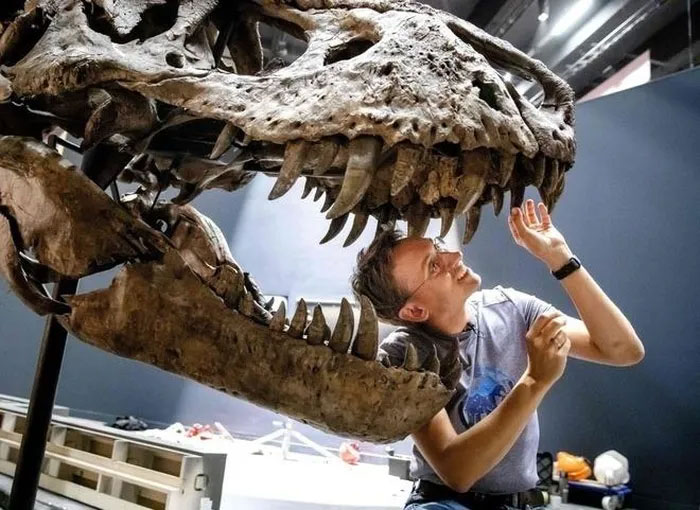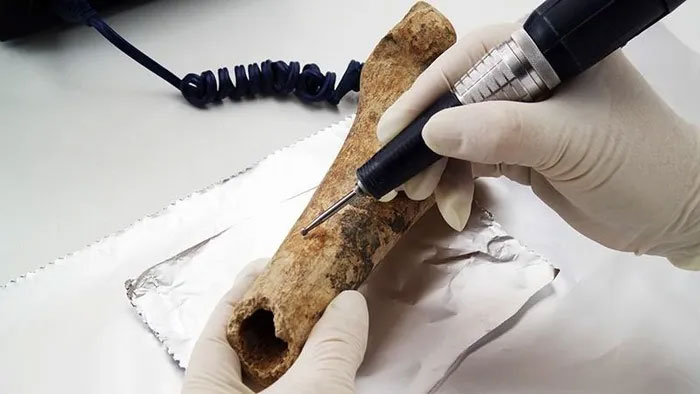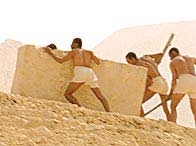Aging methods help determine the age of fossils, artifacts, rocks, and more. This allows humanity to construct a timeline recounting events on Earth.
30,000 years ago, fishermen on Okinawa Island, Japan, used fishing hooks. 40,000 years ago, people in Germany played string instruments. Many shells were found at a depth of 28 meters underground in Champagne, France, dating back 45 million years…
Aging methods and the field of paleontology have helped us ascertain the age of specimens. The book Tracing the History of Science outlines several methods for dating specimens such as fossils, artifacts, and rocks…

Paleontologist Naturalis Anne Schulp reconstructing the skeleton of a T-Rex dinosaur. (Photo: Bart Maat).
Comparative Method
Considered the first dating method, comparative methods help infer the age of an object by using similar reference samples (shape, patterns, manufacturing techniques) that have been identified. However, this method is not absolutely certain (it varies depending on the tools and geographical location of ancient people, which influenced their crafting techniques).
Wood Analysis
Since the early 1900s, wood has been dated using the tree-ring analysis technique developed by Andrew Ellicott Douglass. Each spring, the trunk of a tree grows thicker or thinner depending on the climate of its environment. When observing a cross-section, we can see growth rings, and by compiling observations from trees in the same region, we can create a growth chart. This method allows us not only to know the exact age of wooden artifacts but also to study climate changes.

Cliff in Capitol Reef National Park, Utah, USA, revealing layers of rock from various periods stacked on top of each other. (Photo: Utah).
Stratigraphic Analysis
This method studies the stacked layers of a geological formation. It was the most widely used technique until the 1950s. The principle of stratigraphic analysis is: the oldest strata are the deepest, and strata of the same layer are of the same age. Any stratum that is cut by another stratum, such as during landslides or floods, is considered older.
Carbon Dating
The carbon-14 dating method is used for organic specimens such as bones, shells, textiles, and more. Carbon-14, like other elements, decays and diminishes along a measurable curve, allowing us to infer the age of specimens up to 50,000 years old.

A thigh bone believed to date back to the medieval period, sampled for carbon dating. (Photo: Science Photography).
Radiometric Measurement
The carbon-14 dating method has limitations as it only allows for dating within a short time frame compared to the age of the Earth and can only date organic material.
To date other specimens, uranium-thorium methods are used for sediments, corals, or stalactites from 35,000 to 10,000 years ago. Scientists also use argon to date rocks ranging from 100,000 to 10 million years old. Theoretically, samarium can trace back to 106 billion years ago.
Last Exposure to Light
Some techniques utilize the reaction of specimens when exposed to or shielded from electromagnetic waves – light. For example, the Optically Stimulated Luminescence (OSL) technique allows for determining when bones were buried.


















































